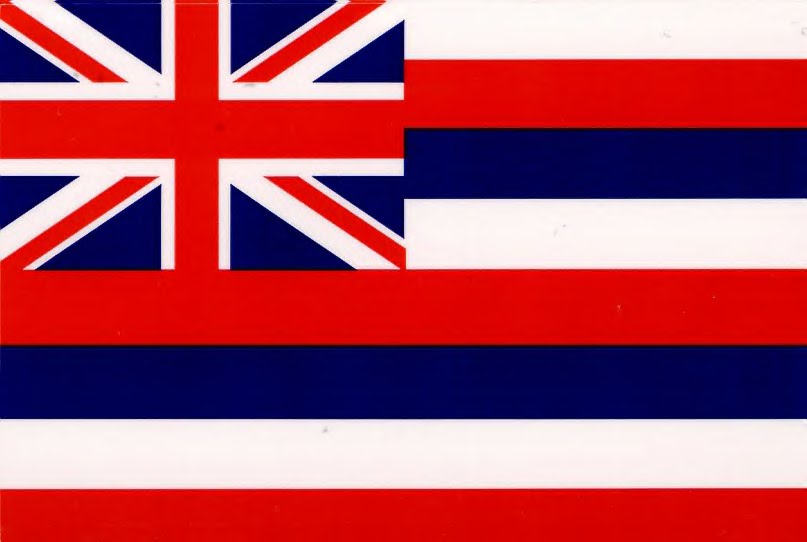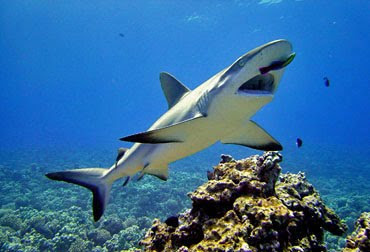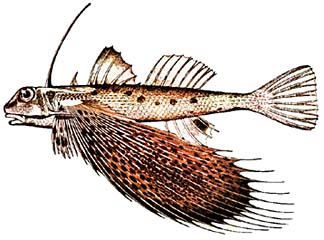Two dives in two days.
This time... back to Makena Landing.
Before gearing up, we have a lesson on land, learning:
- how to read the codes on the scuba tanks, and what it means
- how much weight to put on your belt and the knots to keep them on
- how to attach the BC to the tank and high pressure test the hoses
- reading the depth gauges, and pressure indicators
- how to inflate and deflate your BC to find neutral buoyancy
- what tests/skills we will be doing on the ocean floor
 |
| I've fallen, and I can't get up! |
We got our toothpaste in our masks, fins in our hands and headed to the beach. Luckily for you, Kyle was there to document it all in technicolor (on his phone).
We walked into the ocean, put our fins on and rinsed out our masks. I was looking around as I did this, scanning the water for the shark I had seen last week, since we were standing in the very spot I had seen it. I saw some Goatfish and a Humuhumunukunukuapua'a... but no shark.
 |
| Humu |
We floated out to the deep on our backs, conserving our air and enjoying the cool refreshing water. I kept sneaking peeks into the water, checking out the reef as we passed over a colorful, live stretch. We dove down to about 30 feet and followed the dive instructor (Dave) as he flanked the reef on his right. Within minutes, we saw our first turtle, cruising down towards us from the surface. It came a few feet from us, looked us over and swam away.
Then we came upon a fish that was swimming weirdly, right above the bottom. As I got closer, I noticed that the fish was hooked in a fishing line and that the line itself was caught in a rock on the bottom. Dave took a knife out of somewhere and cut the fish loose. It swam off without even thanking us. It looked like this (but with a lip piercing):
 | ||
| Butterfly Fish |
We saw long Trumpet fish and Needle fish:

Makena found the smallest Sand Dollar I have ever seen. She handed it to me to put in my pocket and I was amazed how small it was. It was actually smaller than this one, and it did not have a hole.
We eventually settled into an area of sparse sandy knolls. Dave gathered us together and I figured it was time for us to do our skills tests. First we had to remove our regulators from our mouths and put it back in, without drinking a lot of yummy ocean water. Then, we had to let the regulator fall behind us so we had to reach back and find it, and return it to our mouths. By puffing quickly into it as you put it in your mouth, you can avoid slurping much water. No problem.
The next test involved flooding your mask and clearing it of water. With contact lenses, there is an added difficulty of having to close your eyes during the process, but I was able to do it without much drama. Then we had to completely remove our masks and replace it and clear it, which I was glad to get done.
The last skills involved taking off the weight belt, then the BC, and replacing them. We also had to do the same tests at the surface on the way back. All were doable.
While we sat on the bottom, stirring up the sand, a turtle came over to us to check us out (much like sitting on the grass in a park when a dog comes by to investigate). It peered at the group of us, seemed unimpressed and moved on towards the surface.
As it swam away, I watched it, and saw something I had never seen before. Again, like a dog in a park, the turtle took a crap... and three dog-like turds floated slowly towards the bottom. I pointed at it and when the girls and Dave saw it, they laughed. Dave swam to the turds, and surprisingly caught one in his hand. Right away, my mind raced with potential hazing scuba initiation rites... I tried to think about what he was possibly going to do with the turtle doo.
Jesse, the other dive instructor, had two ladies (one of which was wearing a thong) that he was doing skills tests with and they were together in a small circle. Jesse did not see Dave as he slowly swam above him and let the turtle poo go. It floated like a feather, slowly sinking in front of his face, missing his nose by mere inches. Jesse lurched and immediately looked for the poopetrator, only to find his buddy Dave, smiling, doubled over in undersea laughter. He swam over to us demanding high fives, beaming with pride.
We continued following the reef around until we came upon some caves, carved into the bottom, around 35 feet deep. Dave went first, pointing into a dark corner. Leslie and Makena were close behind him and soon, they too, were pointing emphatically. I knew what was there before I saw it, so I wasn't surprised to see the Whitetip shark nestled there. It was around 4 foot and definitely smaller than the Grey shark I saw last week. It also appeared to be napping.
 |
| Sleeping shark |
 | |||||||||||||||||||||||||||||||||||||||||||||||||||||||||||||||||||||||||||||||||||||||||||||||||||||||
| Sleeping sharks |
 | |
| not a shark |
We swam along the reef and made the turn back towards the shore, encountering a few more turtles. Dave showed us how to swim underneath them and blow bubbles so that, timed right, they popped on the turtle's belly. I can imagine the turtle thinking " one of these days dude, I'm gonna poop on your head... just you wait."
If I had an underwater camera, I would have taken this picture:
Our air was running out so we headed to the surface, inflated our BCs, and began a slow float back to shore. The sun was out, and there was a cool breeze. As we got to shore, I found myself once again counting my blessings... never taking for granted the bountiful beauty of this place that I find myself living in. The new perspective of looking at it from underwater only adds to my sense of wonder and awe. I live a pretty charmed life.

































